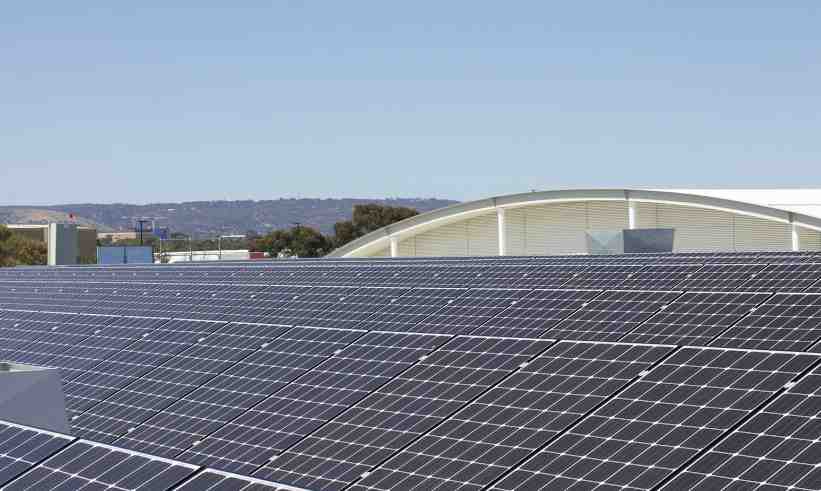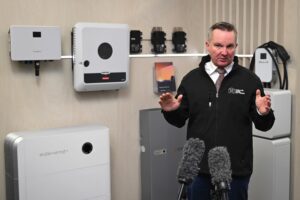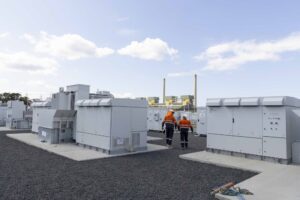As South Australia energy minister Dan van Holst Pellekaan notes, the state is mighty proud of its collection of energy “firsts” – a world leader in the uptake of rooftop solar and wind energy, the host of the world’s biggest lithium-ion battery among them.
But it’s the latest “first” that is putting the wind up the state government and the market operator: Within one to three years, they say, South Australia could become the first gigawatt scale grid in the world where the growing amount of rooftop solar effectively eliminates grid demand.
It sounds like a milestone achievement, and one that has been expected for some time, if not this quickly. But it is also one that has worried the Australian Energy Market Operator because it has so little visibility or control over this distributed generation, and it’s particularly concerned about what happens when South Australia is operating as an “island”.
It has long planned a “roadmap” to introduce new standards, new technology and new protocols to enable it to manage this growing resource, but the accelerating uptake of rooftop solar – and the fear that the “zero demand” benchmark may be reached before a new interconnector to NSW is built by around 2023 – has forced it and the state government to fast-track their response.
South Australia is not the only grid to face this issue. It will happen, over time, in many different grids, particularly in light of new forecasts by the CSIRO which suggest that Australia will have up to 60GW of rooftop solar (under 100kW) installed in coming decades.
In Western Australia, rooftop solar is already by far the biggest generator in that grid, and within a few years could push “minimum” demand down to levels that could cause problems for the grid operator.
The situation in W.A. is complicated by the fact that there are no options for new connections, so it has also been focused on fast-tracking new standards for inverters and mechanisms that could allow the market operator to effectively switch off rooftop solar on the rare occasions that the issue causes a problem.
Luckily for W.A., it is not bound by the laborious regulatory regime that limits and slows the actions of the remainder of the country, so it has been able to forge its own path ahead.
South Australia, however, is part of the National Electricity Market and nominally part of the regulatory structure that governs its rules and regulations. But that structure has long been seen as no longer fit for purpose, and now South Australia says it has no choice but to break from its ranks in response to a stark new report from AEMO.
The report – Minimum Operational Demand Thresholds in South Australia Review – was handed to the state government in May, and not published till now. It says that zero operational demand could occur within the next one to three years and unless AEMO has new powers to manage rooftop solar, there is a real danger of a major blackout should the main interconnector fail and voltage problems cause large amounts of rooftop solar to trip.
AEMO says this makes it almost impossible for it to manage the grid securely. And it wants to create a backstop mechanism, what it calls a “demand recovery reserve” of up to 500MW within the next few months (by spring, 2020) – and up to one gigawatt by 2024 – if the rooftop solar PV continue to grow at current rates.
 It’s important to note here that AEMO insists these reserves – and the ability to switch off large amounts of rooftop solar – will only be required when South Australia is operating as an island (i.e. when storms tear down the main transmission line) or if there are other unusual system outages or a major load is lost, and/or a big gas generator trips.
It’s important to note here that AEMO insists these reserves – and the ability to switch off large amounts of rooftop solar – will only be required when South Australia is operating as an island (i.e. when storms tear down the main transmission line) or if there are other unusual system outages or a major load is lost, and/or a big gas generator trips.
“The need for generation shedding capability should be considered analogous to load shedding capability – it is a last resort mechanism used to maintain system security in exceptional circumstances,” it says.
“All large-scale generation output is controllable. This is now an essential capability for distributed resources, given they supply a large proportion of generation in South Australia at some times.”
It also wants the introduction of “flexible export controls”, which sounds like it might want to control the output of rooftop solar – beyond domestic consumption – more often, and which will be focused on commercial scale installations of 30kW or more.
The question for the market is the risk of over-reach. AEMO, understandably, has become much more conservative since it was the target of criticism for its management of events the led to the system black in South Australia in September, 2016, and the controversial load shedding in early 2017.
It has placed constraints and restrictions on South Australia’s output, and the operation of the link to Victoria, and now proposes to introduce more – particularly in days of high solar and low wind output. AEMO admits it is learning as it is doing – this is, after all, new territory for it and any other grid operator in the world.
“Given the novel nature of power system operation under these conditions, AEMO’s work to explore system security will be an ongoing process,” it says. “This technical report presents findings to date, covering the development of new dynamic models that capture the behaviour of load and distributed PV during system disturbances, and initial analysis of impacts on power system security.”
It does admit that its modelling has some uncertainties, but it is choosing the path of caution.
- “Given this considerable uncertainty, a precautionary approach is recommended, taking reasonable steps early to address the most pessimistic outcomes,” it argues.
- “This is particularly important given the potentially severe consequences of being under-prepared, and the long timelines required to implement most solutions.”
AEMO argues that the shedding ability is necessary because the other options can’t be introduced quickly enough – this includes “solar soaks” such as increased battery storage, virtual power plants, and shifting loads such as pool pumps and hot water to the daylight hours and trying to “manufacture” loads elsewhere.
“It is important to distinguish between the need to establish a back-stop generation shedding mechanism to give AEMO the tools to maintain system security even in abnormal conditions (which is the need identified in this study), versus the objective of developing holistic frameworks and markets for efficient DER integration,” it says.
“Investment in further BESS (batteries) and VPPs in the NEM will undoubtedly bring considerable benefits to the power system, in a myriad of ways. BESS technologies can provide many system security benefits.”
As for standards, AEMO wants to improve them for inverters in rooftop solar arrays, particularly their “ride through” capabilities (ability to remain connected during voltage disturbances), and to enforce existing standards. It estimates that up to 40 per cent of installed inverters do not conform to existing standards.
It also wants “smart” capabilities introduced for all new distributed resources in real time. It says this will facilitate DER participation in two-way markets, and is also an essential underpinning for future power system security.
“Feed-in management (also called flexible exports) provides AEMO and Distribution Network Service Providers (DNSPs) with a crucial capability to actively manage distributed PV when this is necessary for system security (such as when South Australia is operating as an island and operational demand is too low.”
It is pushing the local network operator, SA Power Networks, to accelerate its current program, with the focus on commercial systems of 30kW and above. And, of course, it wants the new link to NSW to be built, a $1.5 billion transmission link known as Project EnergyConnect.
It is also looking at new tariffs to encourage demand response, ways of encouraging more battery storage, which it says is excellent for providing fast frequency response, and it has identified about 120MW of load that could be switched to the solar soak.
And how often could the situation that AEMO fears actually occur?
Well, not that often.
For a start, it needs all these things to happen, in combination:
Operation with only a single Heywood circuit available (or other network outages that lead to a credible risk of separation).
- Importing into South Australia on the Heywood interconnector (or exporting at low levels).
- A high distributed PV generation and moderate to low load period
A severe fault in or close to the Adelaide metropolitan area, causing a large synchronous (gas) unit to trip.
It says the risk of this occurring is 0.14 per cent of the time, or about 12 hours a year, growing towards 100 hours a year in 2021. But it makes clear that these periods will only be problematic if South Australia is at a credible risk of separation, and if the proposed constraints (making sure the state is exporting at times of high PV output and lowish demand) are not in place.
“This analysis indicates that this risk manifests very rarely, although it remains prudent to introduce network constraints to avoid operating the network in a way that allows this risk to arise,” it says.








